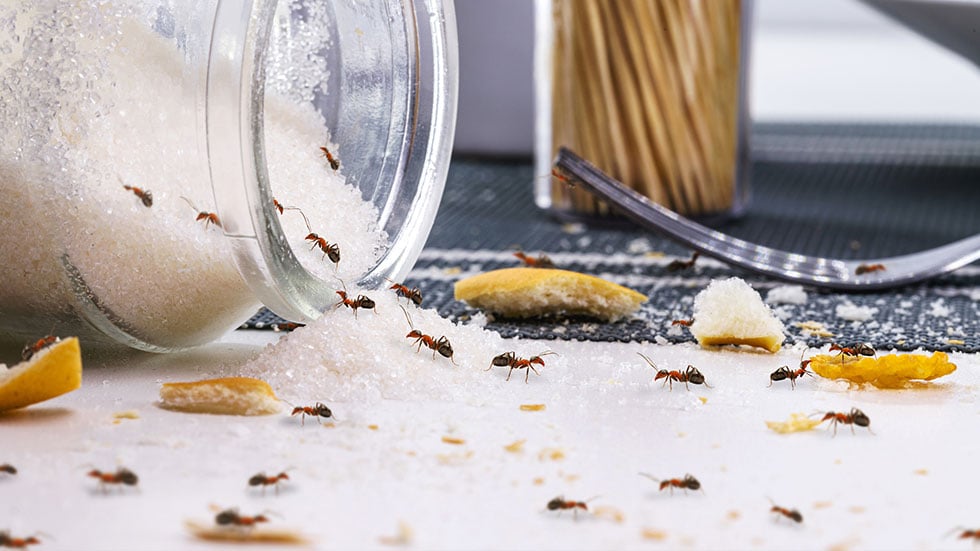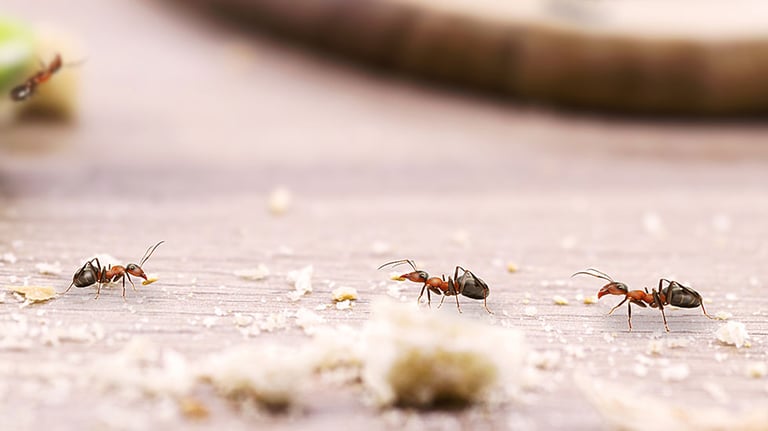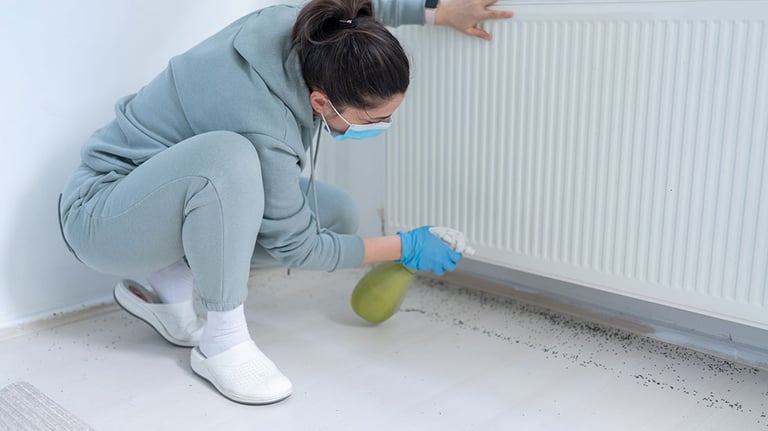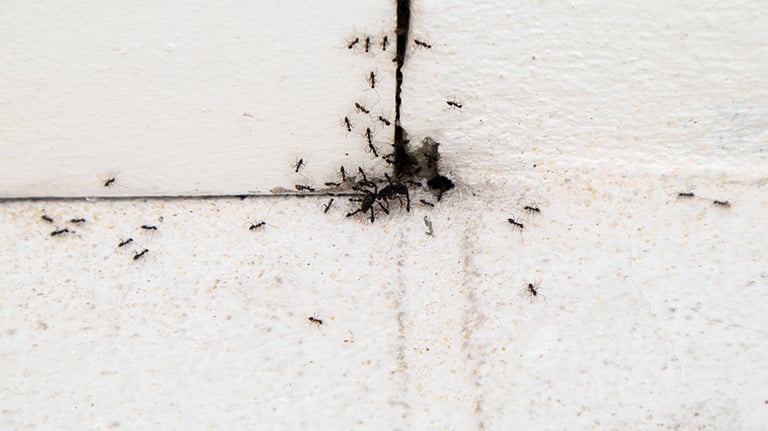The Hidden Danger of Ants—and How to Ant-Proof Your Home
Ants are more than just a nuisance; they can cause serious damage. Learn how to eliminate risks and stop an ant infestation in its tracks


For generations, children have cheerfully sung “The Ants Go Marching,” a nursery rhyme set to the tune of “When Johnny Comes Marching Home.” But when real ants parade across your kitchen floor or basement beams, there’s little cause for a hearty “Hurrah!”
That’s because ants rarely march alone; in fact, they live in massive colonies, often numbering in the hundreds of thousands.
“If you see one ant, chances are there are others nearby,” says Jim Fredericks, a board-certified entomologist and senior vice president of public affairs at the National Pest Management Association. “They’re considered America’s number-one nuisance pest.”
Here’s what you need to know to stop an ant infestation in its tracks.

Ants 101
The US is home to more than 700 species of ants, but only 25 invade homes, Fredericks says. The four most common culprits are the carpenter, field, pavement, and odorous house ants.
For a visual guide, this chart by the Western Exterminator Company breaks down the key traits of each ant type. Here’s where you’ll typically find them:
- Carpenter ants nest in decaying, moist wood, trees, and structures. They chew through the wood to build nests and tunnels, which can damage your home, explains Tracy Ellis, an entomologist at FarmSense, which specializes in innovative insect monitoring solutions.
- Field ants prefer to nest outside in yards, near houses, fences, and trees.
- Pavement ants live beneath patios, driveways, and sidewalks, typically settling in pavement cracks.
- Odorous house ants hide in wall voids near heat sources. Their name is a warning: When crushed, they release a foul odor.
Look for signs
An ant swarm on a windowsill or in the sugar bowl is easy to spot. Carpenter ants, however, are more elusive as they often nest and tunnel within a home’s woodwork.
Ellis recommends watching for small piles of powdery wood, shavings, or small pellets near structures, door frames, fireplaces, or trees.
Use your ears as well as your eyes. An ant colony nesting within walls, framing, or insulation can produce a faint rustling or vibration, especially at night when they’re most active.

Identify—and eliminate—ant attractors
Ants swarm in and around your home for a reason.
“All pests require food, harborage, and water,” says Daniel Harris, regional technical training manager for Arrow Exterminators. “At times, we may create conditions that attract multiple species of ants.”
Common attractors include:
- Spilled food or beverages
- Trash or recyclables stored in the home or garage
- Leaking pipes or faucets
- Plants or shrubs infested with honeydew-producing insects
- Firewood stacked near the home
- Overhanging tree limbs, shrubs, or vegetation touching the house
- Pet food bowls left out
- Moist, exposed, or untreated wood, especially if softened by fungus or rot
Eliminating these conditions is essential to preventing an ant infestation, Harris says.

Removing ant infestations
Getting rid of ants is about more than just an inconvenience; they can bring serious health and structural risks. Odorous house ants can spread bacteria throughout your home, while carpenter ants may silently cause wood damage that can take years to notice.
Luckily, there are several ways to tackle an ant infestation:
- Ant traps. Ant killer baits or other treatments that eliminate the queen are the most effective, Ellis says. “This will eliminate entire colonies,” she adds. However, the ants must take the bait. If they aren’t interested, try a different brand or move the bait to a different location. Maintain the baits until ants stop returning.
- Ant spray. Ellis warns that sprays only kill the ants you can see. Those that claim to create a barrier around the home may actually trap the ants inside.
- Professional exterminators. Carpenter ants, in particular, can be difficult for DIYers, Ellis says. “Obtain estimates from professional pest control companies and contractors and decide on an optimal treatment plan,” she says.
- Natural remedies. Home remedies often involve creating a repellent. Try citrus peels, thyme, lavender, peppermint oil-soaked cotton, cinnamon, coffee grounds, or cayenne and black peppers. As for physical barriers, try chalk, salt, baby powder, or diatomaceous earth (a powder that dehydrates ants).

Practice prevention
To avoid another infestation, use this checklist compiled by Fredericks:
- Seal cracks and crevices around windows, doors, and utility openings.
- Remove landscaping debris and excess vegetation near your property.
- Store firewood away from the home.
- Regularly wipe down counters, sweep up crumbs, and store food—especially sweets—in airtight containers.
- Clean up spills immediately, and place garbage in cans with lids.
- Wash pet bowls regularly.
- Check bathroom pipes for leaks.
- Use a dehumidifier in basements and attics to reduce moisture.
- Schedule annual inspections for carpenter ants.
- If there’s no infestation, a professional pest control company can apply preventative treatments to keep ants at bay.
Bottom line: Stay vigilant. There’s truth to the phrase “as busy as an ant.” Let your guard down, and these industrious insects will quickly seize the opportunity to move in.
